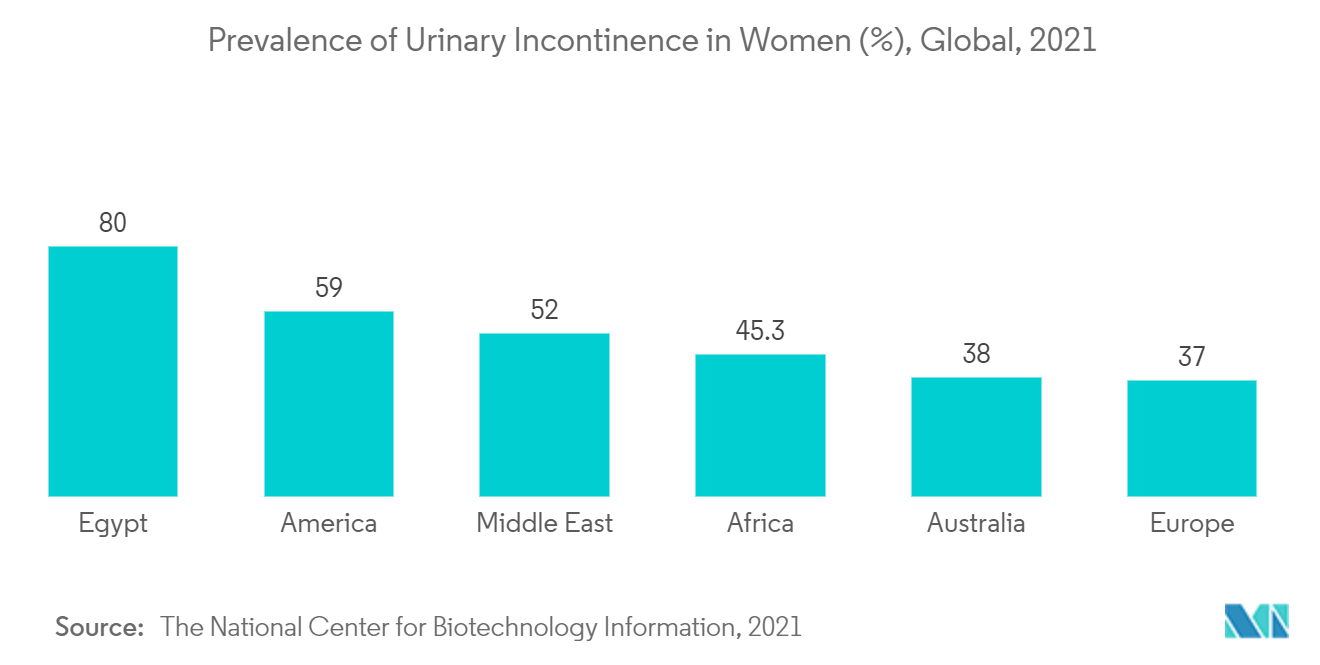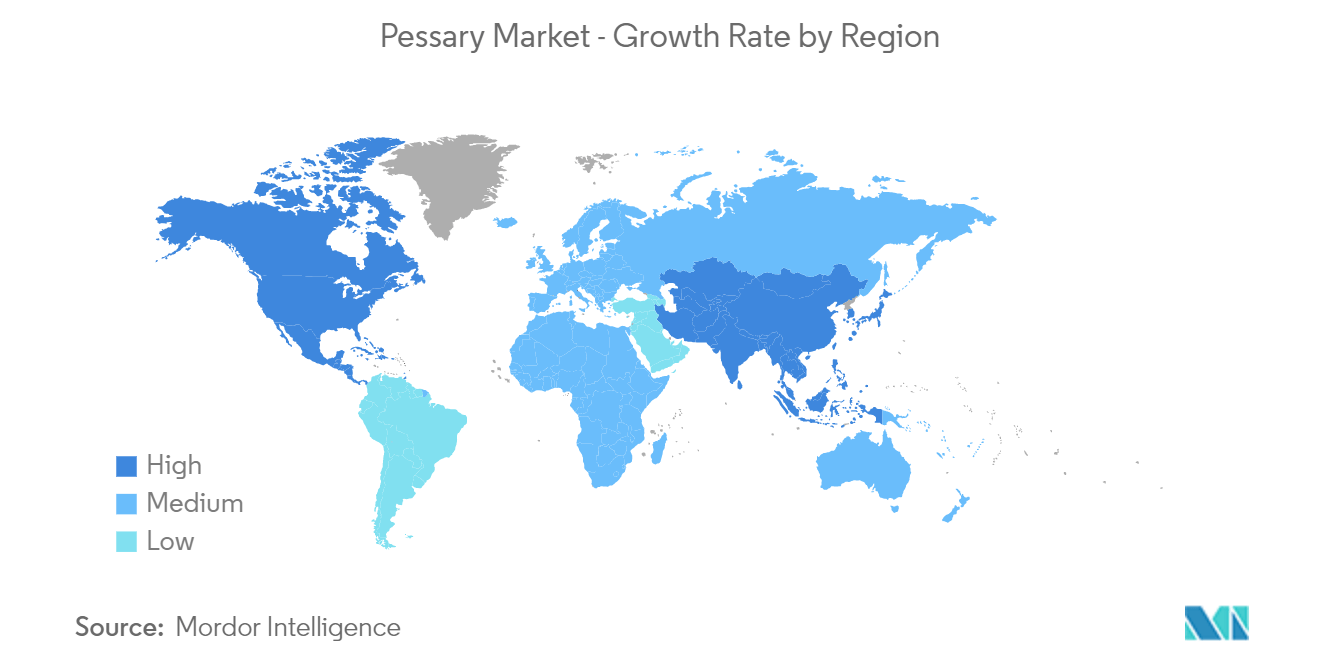Market Trends of Pessary Industry
Ring Pessary Segment Expects to Register a Significant CAGR Over the Forecast Period
The ring pessary segment is expected to witness significant growth over the forecast period owing to the factors such as ease of usage and patient comfort and is appropriate for all stages of pelvic organ prolapse and urinary incontinence as well as for the prevention of infectious diseases. Ring pessaries are transvaginally implanted devices that stabilize and support the urethra and bladder neck, lengthen the urethra, and provide moderate compression of the urethra against the pubic bone during a rise in intra-abdominal pressure. In addition to its use in women with stress urinary incontinence, a continence ring pessary may help certain women who experience urine urgency and frequency due to pelvic organ prolapse pressure.
The high prevalence of urinary incontinence and pelvic organ prolapse increases the demand for pessaries. For instance, according to an article published in the International Urogynaecology Journal, in November 2021, it has been observed that about 40% of women experience pelvic floor dysfunction or pelvic organ prolapse (POP), and pessary treatment is one therapy option that has a high level of patient satisfaction (75.3%), efficacy (90.7%) and a positive impact on the improvement of vaginal and sexual symptoms, quality of life, and mental health. In addition, as per the same source, the ring pessary without a membrane is the most frequently used type that allows for sexual activity while retaining less vaginal discharge than occlusive (Gellhorn) varieties or devices with a membrane. This increases their adoption among the users hence propelling the segment's growth.
Moreover, the rising approvals for pessaries to treat pelvic organ prolapse are likely to contribute to the market growth. For instance, in January 2021, WHO recommended a dapivirine vaginal ring (DPV-VR) that may offer an additional prevention choice for women at substantial risk of HIV infection as part of combination prevention approaches. Also, the Food and Drug Administration (FDA) has approved ProVate (ConTIPI), a vaginal ring pessary with a disposable applicator for the temporary, nonsurgical management of pelvic organ prolapse in women.
Hence, due to the aforementioned factors, the segment is anticipated to grow at a significant growth over the forecast period.

North America is Expected to Have the Significant Market Share Over the Forecast Period
North America is anticipated to have a significant market share owing to the factors such as the aging female population, lifestyle changes that cause hormonal disruptions, the rising prevalence of pelvic organ prolapse and urinary incontinence, increased health awareness, and the presence of major players.
The increasing prevalence of urinary incontinence and pelvic organ prolapse are the major factor driving the growth of the pessary market in the region. For instance, according to an article published by the National Center for Biotechnology Information (NCBI), in October 2022, due to advancing age, approximately 9.7% of women between the ages of 20 and 39 and 49.7% of women over the age of 80 are likely to experience pelvic organ prolapse during their lives. As per the same source, by 2050, the number of people with pelvic organ prolapse is expected to rise by 59%. Similarly, according to an article published in the NCBI, in August 2021, it has been observed that urinary incontinence affects women disproportionately more than males and it significantly increases among women aged 60 years and older.
Additionally, the aging, overweight, and obese population of the United States is expected to add to the burden and expense of PFD on society and the healthcare system. For instance, according to an article published in Scientific Reports, in June 2022, about 1 in 2 adults is expected to be obese, and nearly 1 in 4 adults are projected to have severe obesity by 2030 in the United States. Thus, the increase in the obese population increases the risk of developing a range of urinary, bowel, and sexual dysfunction problems as well as uterovaginal prolapse, hence propelling the demand for pessaries over the forecast period.
Moreover, the increasing focus of the market players on developing treatment and non-invasive medical devices for treating pelvic floor diseases is also contributing to the market's growth. For instance, in June 2021, Femtherapeutics Inc. was developing a custom-made pessary, a device that combined artificial intelligence-driven machine learning and 3D design to relieve urine incontinence and discomfort in women with pelvic organ prolapse.
Thus, the increasing incidences of pelvic floor disorders, the increasing number of women's aging population, and the rising focus of players to develop non-invasive medical devices for treatment are expected to propel the market's growth in the region over the forecast period.


